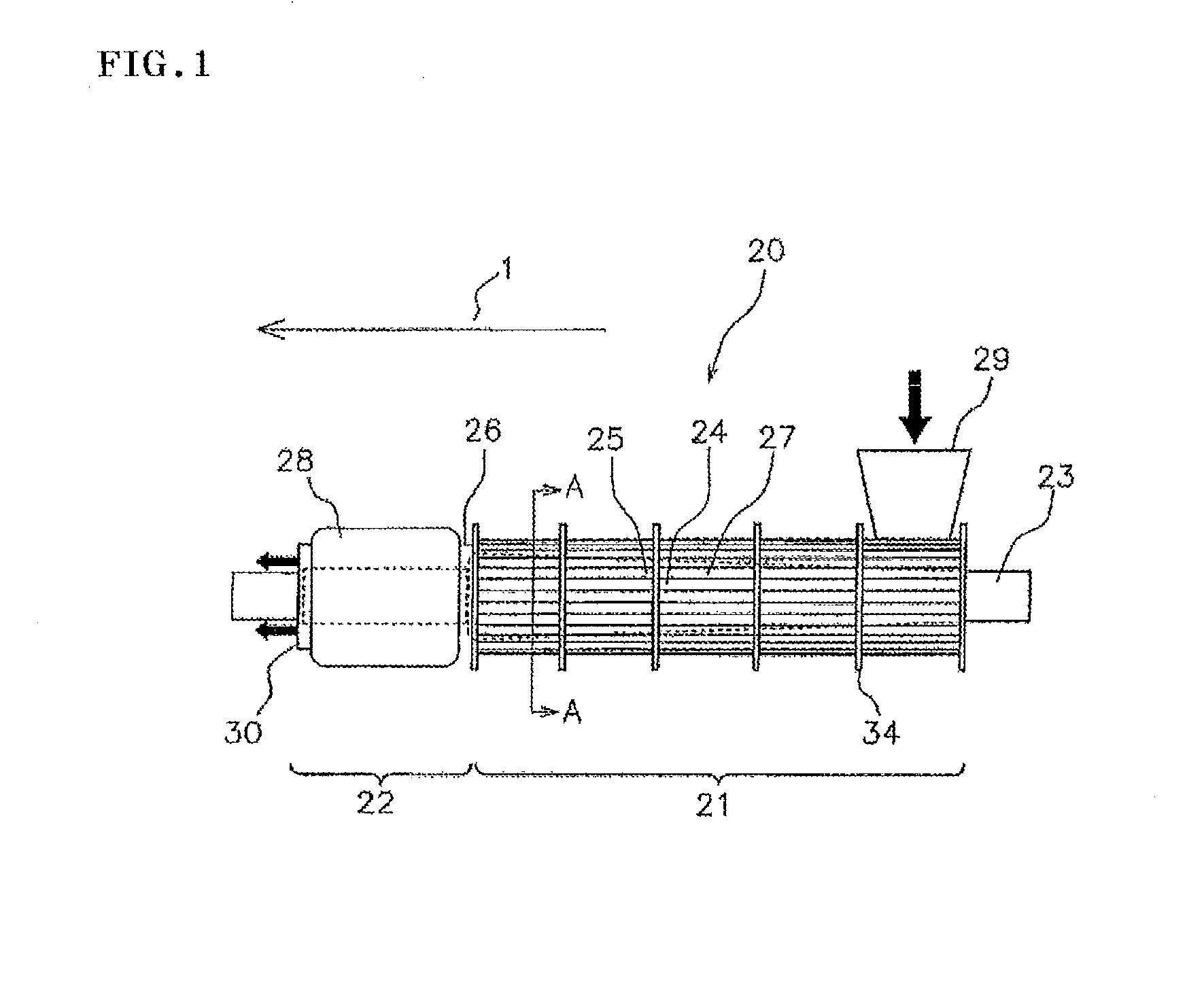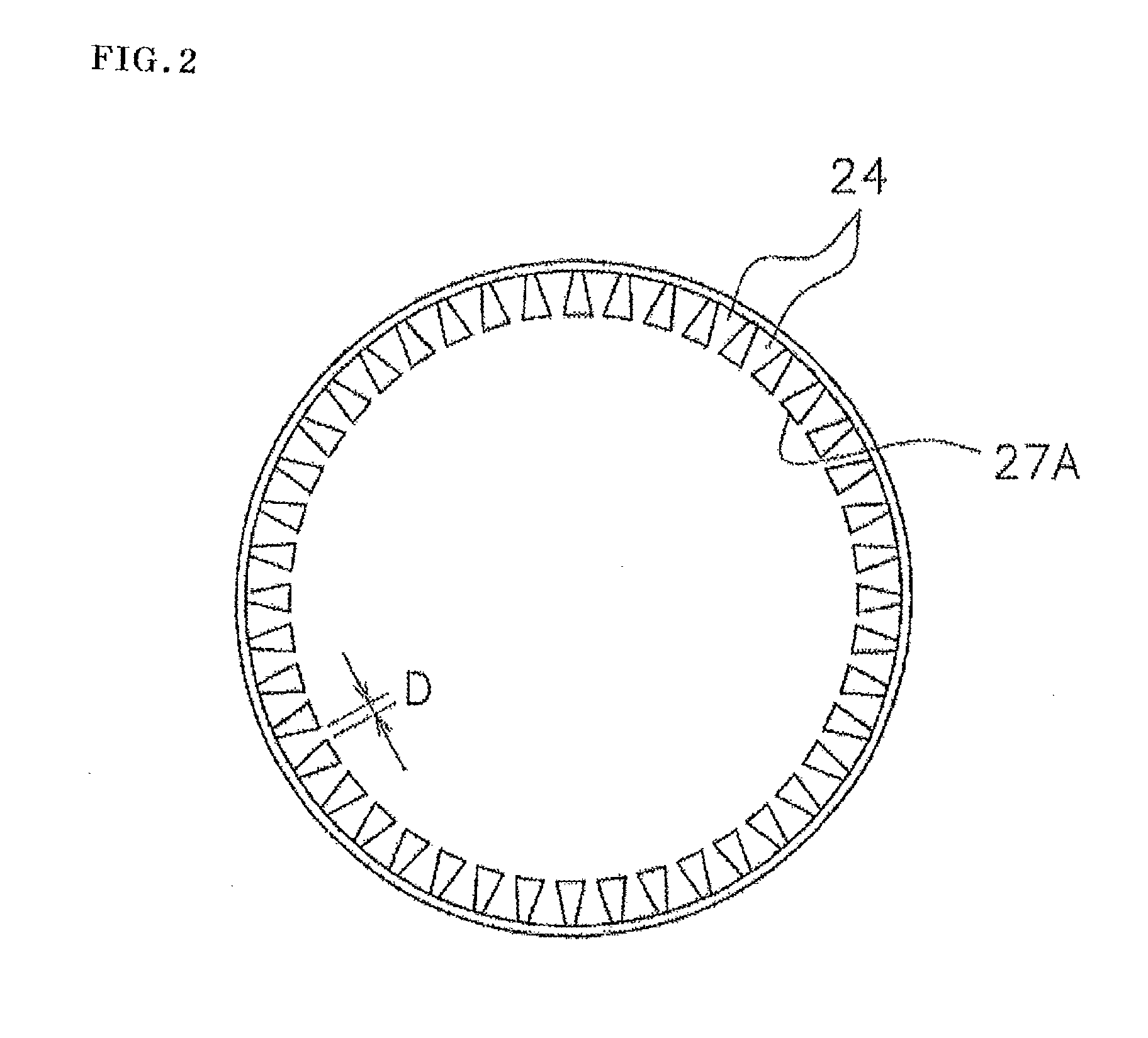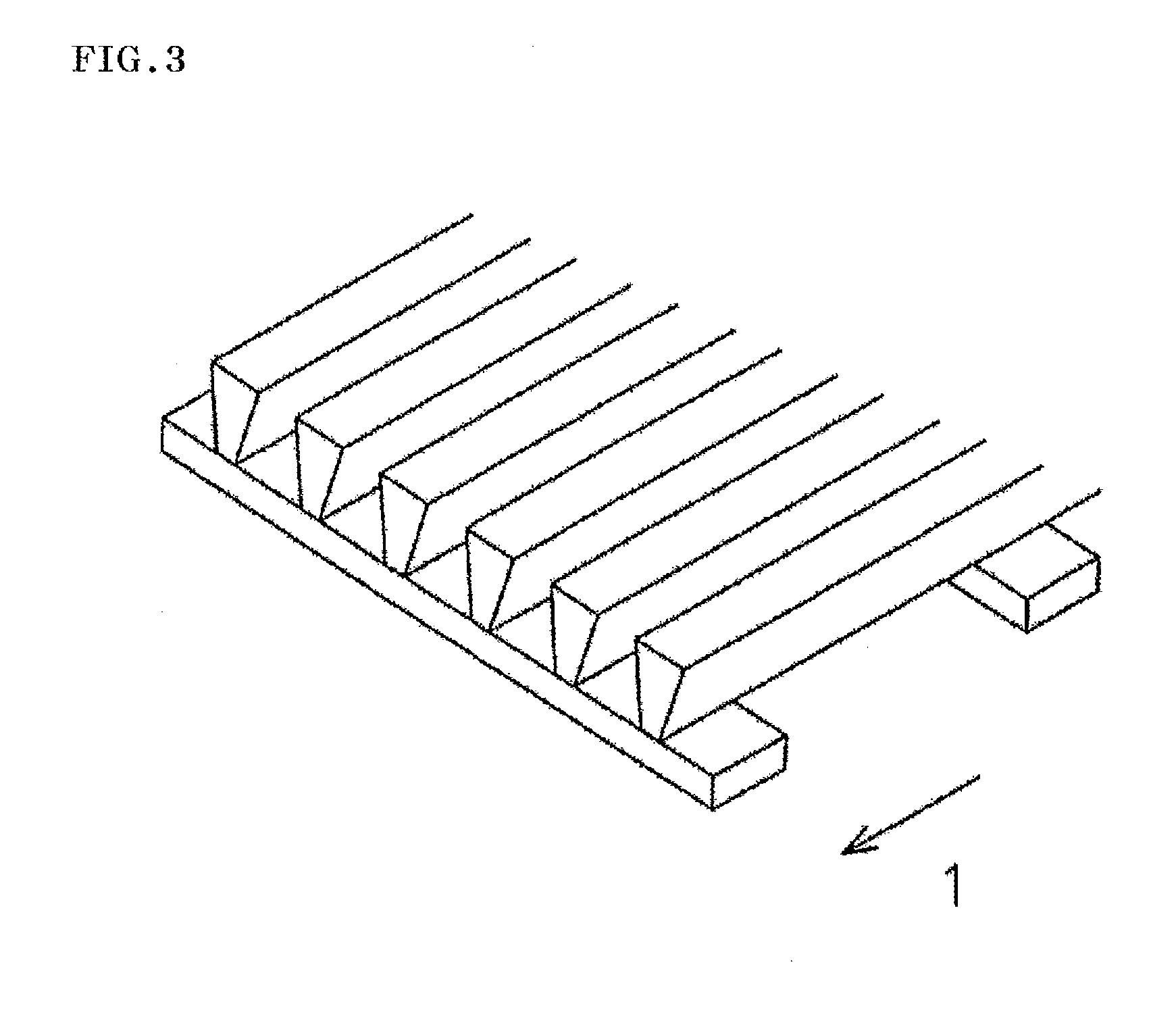Rubber wet master batch producing method, rubber wet master batch, and rubber composition containing rubber wet master batch
a technology of wet master batch and production method, which is applied in the direction of rotary stirring mixer, transportation and packaging, chemical instruments and processes, etc., can solve the problems of large mechanical energy given to deterioration of the characteristics of the wet master batch, and deformation of the rubber component therein, so as to improve heat resistance and durability, lowering the strength of the rubber, and satisfying the effect of rubber strength
- Summary
- Abstract
- Description
- Claims
- Application Information
AI Technical Summary
Benefits of technology
Problems solved by technology
Method used
Image
Examples
example 1
[0083]To a diluted latex solution of a natural rubber, the concentration thereof being adjusted to 0.5% by mass, were added 70 parts by mass of carbon black (the solid (rubber) content in the latex solution was 1 part by mass, this amount being a proportion relative to the mass of carbon black). A device, ROBOMIX, manufactured by Primix Corp., was used to disperse carbon black therein (ROBOMIX conditions: rotation at 9000 rpm for 30 minutes) to produce a slurry solution containing carbon black to which natural rubber latex particles adhered (step (I)).
[0084]Next, to the slurry produced in step (I), which contained the carbon black to which the natural rubber latex particles adhered, was added the remnant of the natural rubber concentrated latex solution (the solid (rubber) concentration therein was adjusted to 25% by mass by the addition of water), so as to adjust the total of the solid (rubber) content therein and that in the natural rubber latex solution used in step (I) to 100 pa...
examples 2 to 5
[0088]A natural rubber wet master batch, a rubber composition and a vulcanized rubber were produced in the same way as in Example 1 except that the type of carbon black used, the heating temperature in the heating step, and the types and blending amounts of the various additives were changed.
PUM
| Property | Measurement | Unit |
|---|---|---|
| temperature | aaaaa | aaaaa |
| Ra | aaaaa | aaaaa |
| temperature | aaaaa | aaaaa |
Abstract
Description
Claims
Application Information
 Login to View More
Login to View More - R&D
- Intellectual Property
- Life Sciences
- Materials
- Tech Scout
- Unparalleled Data Quality
- Higher Quality Content
- 60% Fewer Hallucinations
Browse by: Latest US Patents, China's latest patents, Technical Efficacy Thesaurus, Application Domain, Technology Topic, Popular Technical Reports.
© 2025 PatSnap. All rights reserved.Legal|Privacy policy|Modern Slavery Act Transparency Statement|Sitemap|About US| Contact US: help@patsnap.com



